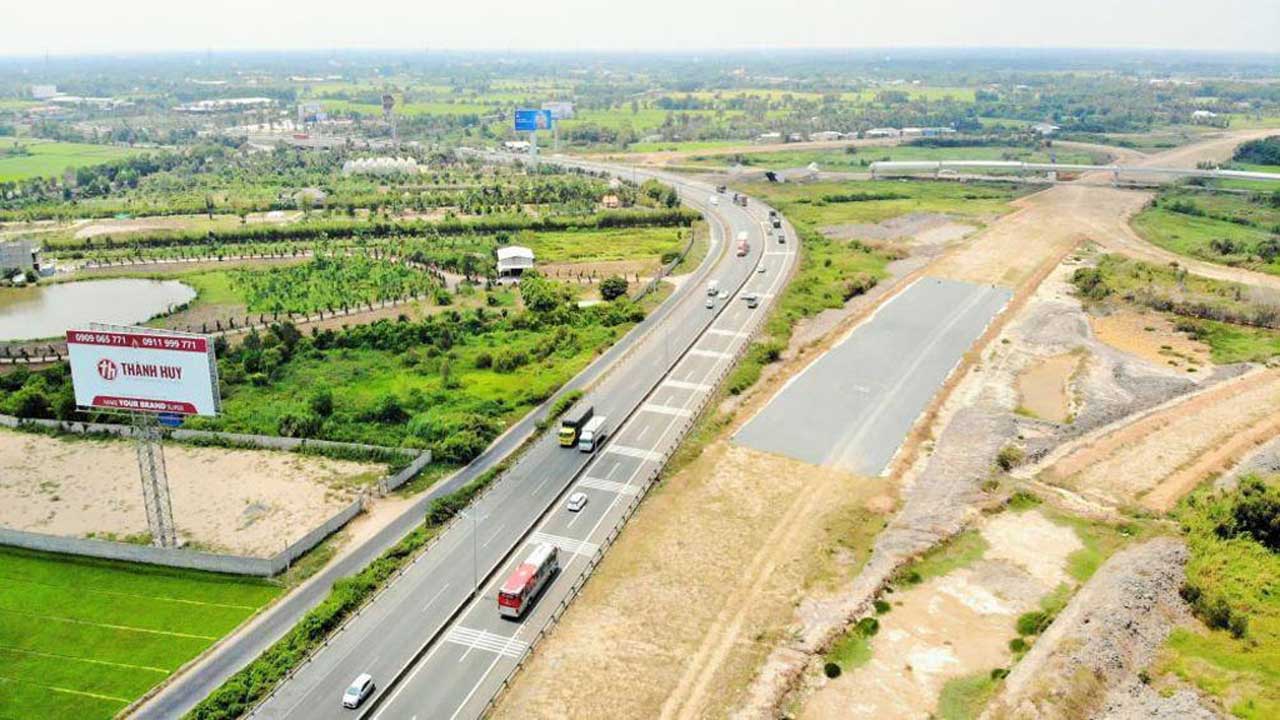HCMC – By 2030, the Mekong Delta is expected to have nearly 1,200 kilometers of expressways, including three southbound axes connecting the region with the southeastern region and three eastbound axes linking seaports and international border gates.
The three southbound axes include the 245-kilometer HCMC-Can Tho-Ca Mau section of the eastern North-South Expressway, the 180-kilometer Duc Hoa (Long An)-Rach Soi (Kien Giang) section of the western North-South Expressway and the 150-kilometer HCMC-Tien Giang-Ben Tre-Tra Vinh-Soc Trang Expressway.
Meanwhile, the three eastbound axes consist of the 191-kilometer Chau Doc (An Giang)-Can Tho-Soc Trang, the 212-kilometer Ha Tien-Rach Gia (Kien Giang) and the 188-kilometer Hong Ngu (Dong Thap)-Tra Vinh expressways.
Deputy Prime Minister Le Van Thanh has signed a decision approving the Mekong Delta’s planning in the 2021-2030 period with a vision to 2050 that includes the traffic system, the local media reported.
Accordingly, the region’s traffic system will be developed synchronously and widely, contributing to the socioeconomic development in the region and the country as a whole.
Besides expressways, national highways with a total length of nearly 1,900 kilometers connecting localities in which expressways have yet to be developed will be prioritized for upgrade.
A system of coastal roads will be developed in line with the road development plan in the 2021-2030 period with a vision to 2050. The coastal road system will be more than 785 kilometers long and connect Tien Giang, Ben Tre, Tra Vinh, Soc Trang, Bac Lieu, Ca Mau and Kien Giang.
As for the railway system in the region, a 174-kilometer route from HCMC to Can Tho will be built.
In addition, 13 inland cargo port complexes and 11 ports serving passengers with a combined capacity of 53 million tons and 30 million passengers, respectively, per year will be developed.
Meanwhile, seaports will meet the demand to complete customs clearance procedures for 64-80 million tons of cargo and serve 6.1-6.2 million passengers per year by 2030. The Tran De Port in Soc Trang Province was planned as a special seaport in the gateway of the Mekong Delta, while the Hon Khoai Port in Ca Mau will become a general port.
The Phu Quoc International Airport in Kien Giang will continue serving both domestic and international air passengers. Moreover, the Can Tho International Airport in the city of the same name will be a logistics center of the aviation sector in the Mekong Delta, while Rach Gia and Ca Mau airports will be flight training centers.









